Bryant Park
by Ben Cacace
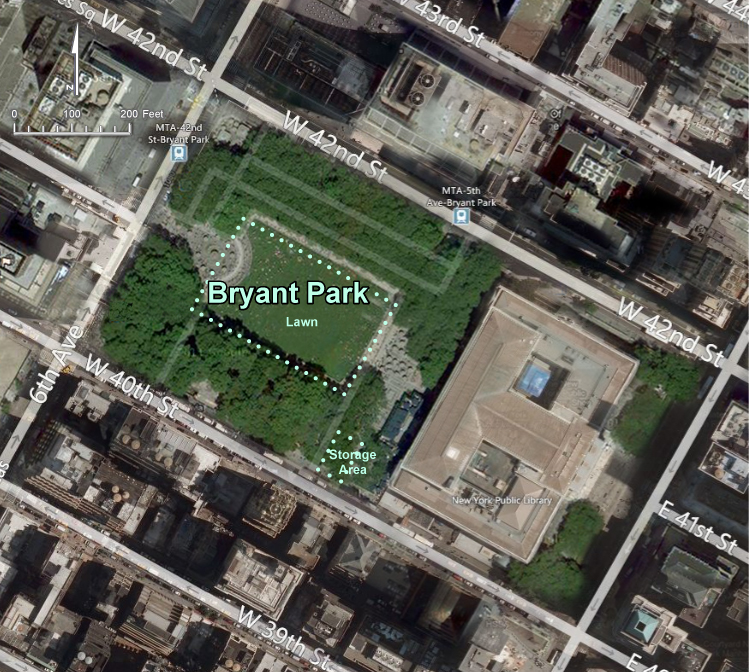
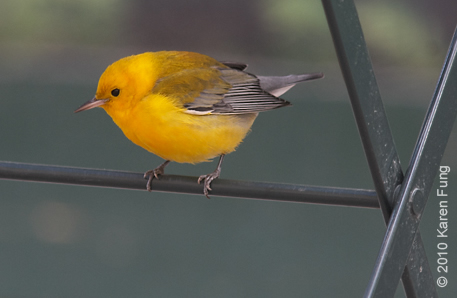
This small urban park surrounds both sides of the New York Public Library between 40th and 42nd Streets and from Fifth to Sixth Avenue in midtown Manhattan. Bryant Park is managed by the Bryant Park Corporation and the grounds are just shy of 10 acres. Since it is located in midtown Manhattan it gets decent coverage by birders working in the area. The locust trees on the Fifth Avenue side of the library are good when migration is in full swing and are always a good spot to check for migrants. The occasional rarities Yellow-breasted Chat and Prothonotary Warbler have both made appearances here.
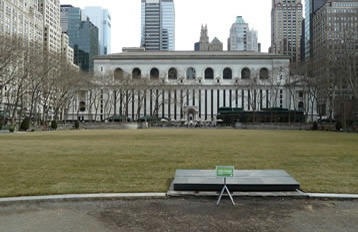
On the west side of the library the main location to check is the Lawn in the center of the park. During the late fall and winter this area is used as a free skating rink. When the Lawn is closed off due to previous rains or maintenance of the sod, people are kept away from the area and this becomes a magnet for migrants. At all times of year the gardens bordering the Lawn on the north and south sides can be productive. Another area in the park that should be checked for migrants is the southeast storage area near the easternmost entrance along 40th Street. Also good to check are the plantings along the fences on 40th Street, 42nd Street and Sixth Avenue. The rectangular garden at the northwest corner of the park can be a spot for birds even when the park is packed with people. A birdbath is installed near the steps at the northeast corner of the park west of the library. The park was first noticed as a birding destination when a Yellow-breasted Chat was spotted during the fall/winter of 2002 and has been birded regularly since 2003.
Birds
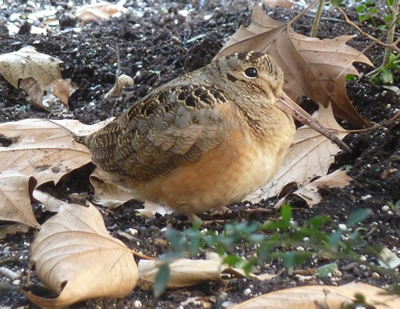
The bird list for the park is currently just over 100 species and both fall and spring are good seasons for birding here. Warblers are well represented with 25 species including Northern and Louisiana Waterthrushes, Prothonotary, Tennessee, Nashville, Connecticut, Mourning, Kentucky, Hooded, and Wilson’s Warblers and the previously mentioned Yellow-breasted Chat. Sparrows are also drawn to the park, especially during fall migration, and the list includes 13 species including Fox Sparrow. Lincoln’s Sparrow is annual in the fall and can be seen foraging out in the open on the Lawn when present, unlike a typical view of them skulking in the underbrush. Interestingly, species such as European Starling and Mourning Dove that are very common elsewhere in city parks are found only infrequently at Bryant Park. The main trees in the west section of the park are London Planes, with Honey Locusts on the east side of the library. Woodpeckers are not that common, with Yellow-bellied Sapsuckers being seen the most regularly and Northern Flickers seen once in a while during migration. There is an active Peregrine Falcon nest box on the Met Life Building located north of Grand Central Station along Park Avenue. The nest box is visible from the western side of Bryant Park. The box is on the west side of the southern facade just above the windows. Peregrine Falcons still make use of the nest box, and the adults are seen frequently. In successful years young falcons can be seen exercising their wings in the nest box.
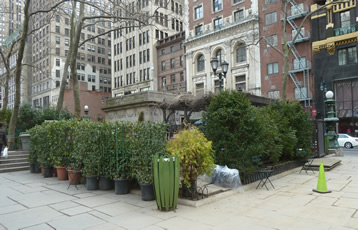
During the fall Yellow-bellied Sapsuckers visit the locust trees on the 5th Avenue side of the library. Besides the numerous White-throated Sparrows, Rock Pigeons and House Sparrows the fall season consistently hosts thrushes, with Hermit Thrush as the most common. Gray-cheeked Thrush is seen annually. Ovenbird is common in the fall and has been seen there as late as January during mild winters. Quite remarkably, besides the 2002 sighting, Yellow-breasted Chat lingered here in 2011-12 for several months from fall into mid January, including two chats for most of December. Sparrows in the fall are dominated by White-throated, along with smaller numbers of Song and Swamp Sparrows and Dark-eyed Junco. When present, generally elusive species such as American Woodcock, Connecticutand Mourning Warblers can give excellent views in Bryant Park. Details of these birds are often available on local local email listservs and other bird alert media.
Other Considerations
The park is well used and can be considered a safe destination. There is round the clock security provided by the Bryant Park Corporation, and the park is a draw for both locals and out-of-towners. The park opens at 7 AM and closes at various times during the year.
Check www.bryantpark.org/plan-your-visit/… for details.
Directions
View Larger Map | Get Directions
Public transportation is available via subway on the B, D, F and M (42nd Street – Bryant Park) and the 7 lines (Fifth Avenue – Bryant Park). Many other lines run nearby including the 1, 2, 3, 4, 5, 6, N, Q, and R trains.

